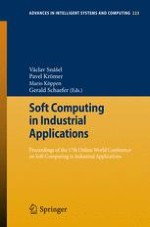This volume of Advances in Intelligent Systems and Computing contains accepted papers presented at WSC17, the 17th Online World Conference on Soft Computing in Industrial Applications, held from December 2012 to January 2013 on the Internet. WSC17 continues a successful series of scientific events started over a decade ago by the World Federation of Soft Computing. It brought together researchers from over the world interested in the ever advancing state of the art in the field. Continuous technological improvements make this online forum a viable gathering format for a world class conference. The aim of WSC17 was to disseminate excellent research results and contribute to building a global network of scientists interested in both theoretical foundations and practical applications of soft computing.
The 2012 edition of the Online World Conference on Soft Computing in Industrial Applications consisted of general track and special session on Continuous Features Discretization for Anomaly Intrusion Detectors Generation and special session on Emerging Theories and Applications in Transportation Science. A total of 33 high quality research papers were accepted after a rigorous review process and are provided in this book.
